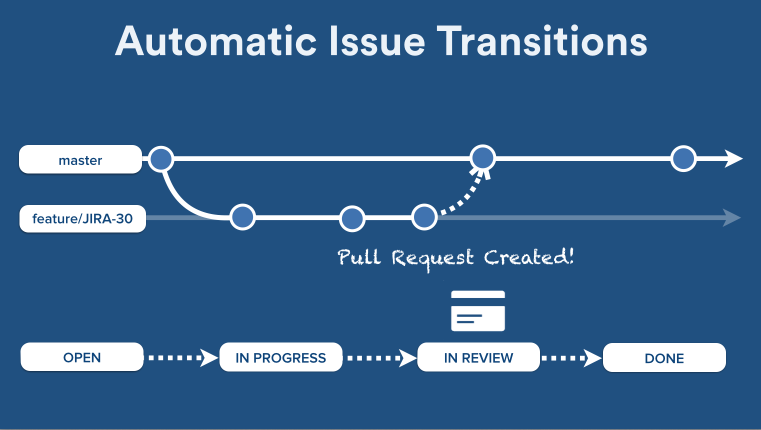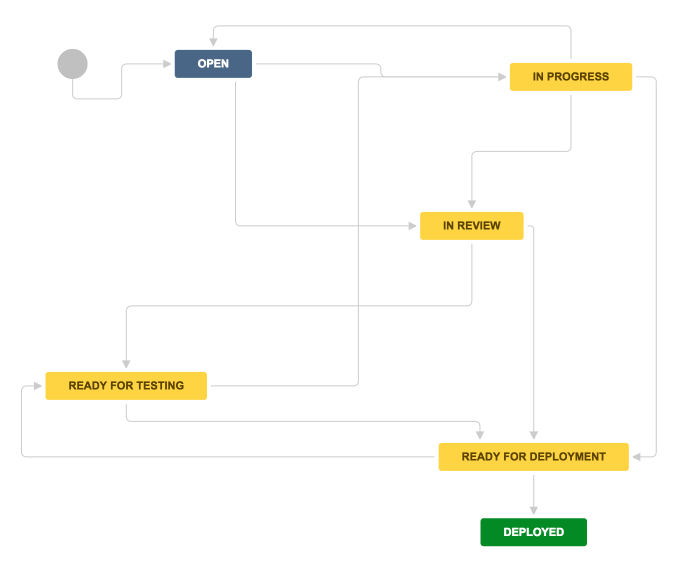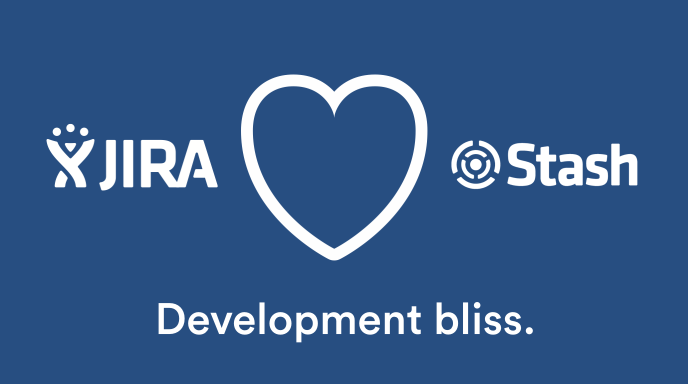A couple of weeks ago I ran a webinar on how to enhance your Git development experience with JIRA and Stash. The half-hour allocated for Q&A wasn’t quite long enough, so I’m following up on some of the unanswered questions in blog form.
If you didn’t catch the webinar, it’s now live on YouTube:
Check it out if you’re interested in:
- viewing related commits, branches, pull requests and builds from the JIRA issue page
- automatically transitioning issues when branches or pull requests are updated
- a sneak preview of the buttery-smooth Git release workflows available in the JIRA 6.4 EAP (early access program)



For those who attended, thanks for the great questions! Here are the answers to some of the ones that I missed during the session:
Can you customize which JIRA issue state to transition to when a branch is updated in Stash? (Lucy C)
Yes. The JIRA/Stash integration makes no assumption about the structure of your JIRA workflow. Trigger configuration is built into the JIRA workflow editor so you can choose which repository events to listen to, and which transitions to trigger, based on your own workflow requirements.
Does the new release screen warn you if your release branch contains code references issues that are NOT assigned to the release? (Agustín M B)
Not yet. The release screen has been built in an extensible manner though, and warnings based on branches and assigned fix versions are a logical extension of what we’ve built so far. It’s likely that you’ll see these and other new release warnings in future releases of JIRA.
Can I get a copy of the example development workflow that you demonstrated? (Thomas R)
Sure thing! The workflow I demonstrated is a simple development workflow with separate states for review, testing, and waiting for deployment. Workflow triggers are bound to a couple of different transitions:
- if a branch is created while the issue is Open it will transition to In Progress
- if a pull request is created while the issue is In Progress it will transition to In Review
- if a pull request is merged while the issue is In Review or Ready for Testing it will transition to Ready for Deployment

The workflow is available as a JIRA Workflow Bundle or as XML.
Does JIRA have an API I can use to replicate the Stash integration for
other repository hosting solutions? (Hangsu M)
Yes and no. Both JIRA and Stash are built on top of a rich plugin system that allows extension. An external developer theoretically could extend JIRA to have similar integration with third-party repository hosts, but it would be a non-trivial amount of effort to develop and maintain such an integration. Practically speaking, you’re likely to get the best JIRA and Git experience by using JIRA and Stash together.
How are tests integrated to automatically run? (Josh L)
My colleague Steve recently gave a great webinar on Stash & Continuous Integration which answers your question in more depth, but briefly:
-
A developer creates or updates a branch in Stash.
-
Stash notifies your CI server that the repository has been updated.
-
Your CI server builds the changes and posts the results to Stash.
-
(Optionally) Stash will prevent the branch from being merged into
masteruntil there is a successful build.
- JIRA indexes the branch, build and pull request information and displays it on the corresponding issue page.
If I am a current JIRA user, can I import my existing Git repositories into Stash? (Alex G)
For sure! Since Git is a DVCS, migrating to a different Git hosting system is ridiculously easy. All you need to do is push your repository to Stash, and your linked JIRA will begin indexing your commit, branch, and pull request metadata automatically.
Where does that Progress button live again? (Ryan M)
To preview the new project progress view, you’ll need to install the JIRA 6.4 EAP and start your JIRA server with the following flag:
-Djira.plugin.devstatus.phasefour.enabled=trueThe Progress link will appear on the left hand menu on your project view.
When you create a feature branch, is a build plan for the branch
automatically created in Bamboo? (Trey S)
Yes! Bamboo’s automatic plan-branching handles this for you. The Stash & Continuous Integration webinar I mentioned above has more details.
We are currently using a Git repository to store our issues. If we want to move to Stash/JIRA, what do we need to do in order to integrate the existing data? (Yair H)
JIRA has built-in importers for various competing issue trackers. There’s also a CSV importer you can fall back on if there’s no explicit support for your current issue tracker.
Does JIRA support deleting feature branches in Stash after they are merged? (Andrew S)
Stash will offer to clean up your branch for you when you merge your pull request.
Can I have Stash with the cloud versions of JIRA and Bamboo? (Luciano P)
Yes, provided your Stash server is publicly addressable so that JIRA and Bamboo can reach it.
Is it possible to distribute Git commit hooks with Stash? (Tom M)
The most convenient way that we’ve found to distribute client-side Git hooks is to commit them to the repository and then symlink them to your .git/hooks directory. Stash also has a Repository Hooks API for implementing server-side hooks.
In Stash, is there a way to prevent “ninja” commits directly to master?(Jamieson E)
Yes! Stash branch permissions allow you to prevent direct updates to specific branches or branch patterns.
How does Stash associate a pull request with an issue? (Mike K)
A pull request will be associated with an issue if it:
-
contains a commit that references the issue key in it’s commit message;
-
contains the issue key in it’s title; or
-
contains the issue key in it’s source branch.
See Understanding triggers for a deeper explanation of how this works.
How are you structuring the relationship between feature branches and builds such that you see when builds fail for a given issue? (Reuben K)
Stash knows which commits relate to which issues and which commits have failing builds so long as you include the JIRA issue key in the commit message. If the most recent commit that references a particular issue has a failing build, then that issue is considered to have a failing build.
How does Stash handle merge conflicts? (Jesse T)
If there is a conflict, Stash will display the conflicting changes in the UI and prompt you to resolve them using your IDE.
What happens if the pull request is rejected? (Tomas M)
It’s up to you 🙂 There is a “Pull Request Rejected” event that you can bind to whatever issue transition makes sense for your teams workflow.
Did you tell us that JIRA and Stash love each other and then say that
they’re brother and sister? (Michael K)
Err, yes. Platonic, familial love. Though JIRA and Stash get along better than some of the siblings I know.

If you have further questions, feedback, or ideas on what you’d like to see in future webinars, please ping me on Twitter – I’m @kannonboy – or leave a comment below. If you want to hear more about Git, developer tools and what’s going on in Atlassian engineering, you can subscribe to our blog here.